15 Sep 2020 Posted By : Sakshi
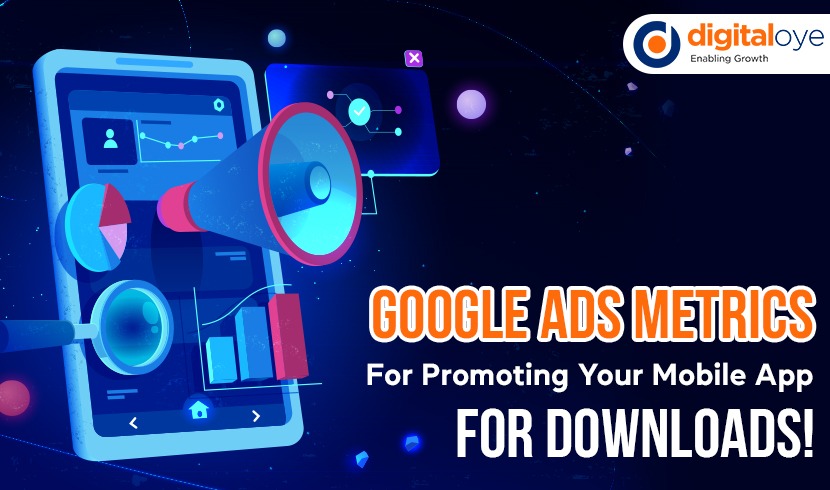
Tags : #seo,#mobileappmarketing,#mobileapp,#googleanaytics,#googleads,#digitalmarketing
Remember the times when we considered the search engines to be the most competitive? Yes! Ranking in the search engines does take a lot of effort. But there is one more competitive environment boiling up every year, i.e. the App Store Market!
Every month, a thousand new apps pop on the two most popular app download platforms - Google Play Store and Apple App Store. Just like how there are hundreds of websites competing in one particular niche on the search engine, the same goes for the app's environment.
Considering the high penetrations in the smartphone industry over the years, people are now able to search for anything just by a tap! This said, there are apps for everything available today. For example, there is no need to go on the website to shop online for apparel or home furnishing; you can select from a wide range of such eCommerce apps and shop online from the convenience of your home.
Having an app for your business is the second step everyone should take after launching their websites. You can do this by either hiring freelancers or a professional mobile app development agency in Delhi.
You must have read a lot of articles which define new and advanced strategies that you can execute for your business. However, what many forget to cover is the ultimate metrics of online paid channels that will guide you throughout your app promotion process.
In this article, we will discuss the marketing metrics based on the stage at which your app user is -
Stage One: Awareness
Stage Two: Acquisition
Stage Three: Activation
Stage Four: Retention
Stage Five: Monetization
Stage 6: Referral
Mobile App Marketing is all about making the potential users aware about your app in a way that they become curious from the moment they hear about your app, download and use it, and ultimately become your loyal users. To excel at mobile app marketing, the first thing that you need to have in place is your target audience; you should know what appeals to them, what are their expectations, and what are the modes to reach them.
Do you know? As of 2019, nearly 47% of small businesses and startups have invested in owning a mobile app. Also, about 35% of companies are planning to build a mobile app in the near future. This said one could not do without standing out with the help of an efficient mobile app marketing strategy.
Now that we have discussed in brief the meaning of the words "mobile app marketing", let's move on to discussing the many metrics that the paid channels of app marketing have to offer -
This is the point where the users have encountered your app for the first time. This can be because of all that you have invested in app launch promotion, SEO (Search Engine Optimization), and ASO (App Store Optimization).
Based on your app promotions, online reviews, and word-of-mouth promotions, your potential audience will decide if the app is useful for them or not.
Here are the key metrics that you need to be mindful of -
Click-Through Rate (CTR) - This metric tells the percentages of user's clicks on your app installs via landing pages and other locations on the internet. Example - a Social Media ad link that directs the user to the app download link.
Traffic Source- This is a simple metric which tells you the source from which the user clicked on your link and downloaded your app. It can help you strategize your marketing strategies for the seed that brings in the most downloads.
Cost Per Mile (CPM) - Also known as Cost Per Thousand, it shows the number of times the ad of your app was displayed at a location on the internet. If you're running ads to promote app downloads (which you should), you would have to pay a specific fee for every thousand impressions.
Analyzing the above metrics will give you insights into what marketing strategies you should take up to reach your targets. If you see no such improvement in the above metrics, it is clearly a sign that you're advertising in the wrong places.
Moving on to the acquisition stage, the users are familiar with the existence of your app in the stores. This means that the previous app promotions have encouraged the users to consider downloading/installing the app.
Here are the key metrics that you need to be mindful of -
Demographics of Users- This is to understand the demographics of the audience your app appeals the most. Gathering information on their age, gender, purchase behaviour, income, spending habits, etc. will help you target your app promotions better.
Devices- This will tell you from what devices are you receiving the most downloads - smartphones or tablets. This information will enable you to narrow down your targeting further.
Cost per Download- This is the total spendings on installations divided by the total number of app installations.
A number of downloads- This is the total number of people who have installed your apps. This will help you set the further course of communication with them.
By finding out the above metrics, you will be able to better target and direct your efforts to the more profitable demographics and channels.
This is the point where your users have begun to interact with your app. There's more to making an app successful - not just the downloads, the users have to interact with it as well. People tend to download many apps on their phones, but in reality, there are only a few apps that they use daily. After a while of downloading the app, 95% of your users might end up uninstalling the app just after one use. To prevent this from happening, your app must maintain its "WOW factor!".
Here are the key metrics you must be mindful of on this stage -
Onboarding Sequence- This metric will help you analyze the success rate at the activation stage. Based on your app's demands, it can be to create an account, making the first purchase, etc.
Activation Percentage- This is the percentage of people who have actually downloaded your app and have completed the onboarding process.
In case you see a drop in the metrics mentioned above, it will indicate that even though the users have downloaded the app, they are not necessarily using it or have onboarded yet. This will help you strategize and maybe tweak the design or add any attractive incentive to encourage the user to take the desired action.
This is after the user has completed the onboarding sequence. In this stage, you observe the user behaviour and find out how frequently he uses the app. Once you analyze the in-app user behaviour, you can further proceed to improve its retention rates using marketing discounts or changes in its design.
Here are the key metrics you must be mindful of on this stage -
Active Users- This metric helps you track the daily and monthly users who are opening the app daily.
Session Duration- This metric helps you find out for how long a user is active per app session. This will give you an idea when and at what point does the user exit the app.
Uninstall Rate- This will give you a clear idea of how many people are uninstalling the app and after how much time.
This way, you can have precise data of the users who are not returning to your app. You can use these metrics to prevent future abandonments by executing exciting incentives via push notifications and emails.
This is the point where your app has become a regular for the user. This stage is the clear indication that the user has used your app and have liked what it has to offer. Now is the time to take the risk and encourage them to convert into your paying users via premium subscription plans or features. It is very likely that the users who have arrived at this stage probably see the value of paying a small amount for something extra.
Here are the key metrics you must be mindful of on this stage -
Free to Paid Conversion Rate- This is the number of free users that converted into paying users.
Purchasing Time Frame- How much time did it take for the user to convert into a paying user?
If the users frequently use your app, you can consider politely nudging them into making in-app purchases. By analyzing the above metrics, you can find out at what point will the user be willing to pay an additional amount.
If the user has made it this far to the referral stage, it indicates that they are your loyal users. These are the ones who are most likely to refer your app to others. This is the best moment to offer them an incentive to encourage them to bring in more new users or write a positive review for your app in the app store.
Here are the key metrics you must be mindful of on this stage -
App Review- What's a better metric than experiencing a flood of positive reviews?
App Ratings- If your app is receiving a five-star rating on the corresponding app store, it is a clear sign that your app is reaching new heights!
Social Shares - This metric will help you see the number of times people have recommended or shared your app on social media.
The app with the maximum number of ratings and positive reviews is the most likely to be downloaded.
In such a dynamic environment, you should not underestimate the power of an app version of your business website. However, if you want your mobile app marketing strategy to be on point, the first thing that you need to ascertain is your target audience, their online behaviour, and purchase patterns. You must initiate a data-driven approach and define what your primary marketing channel will be.
There are several marketing channels that you can take up for promoting your app - there are the paid tools offered by popular platforms like Google Ads, Facebook Ads, Twitter Ads, and more. Then there are organic methods like App Store Optimization, Search Engine Optimization, and Social Media Optimization. The ideal practice for your app will be to have a combination of both paid and organic methods of online marketing. However, managing all these marketing modes can be really messy. This is why you should consider hiring a professional digital marketing agency like DigitalOye, who has separate teams for handling different spectrums of digital marketing!
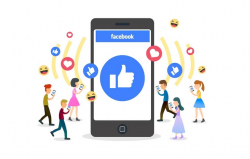 How to Promote Real Estate Business on Facebook
How to Promote Real Estate Business on Facebook
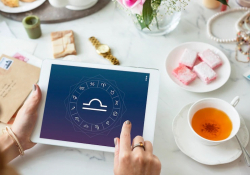 Promote Astrology Services with Digital Marketing
Promote Astrology Services with Digital Marketing
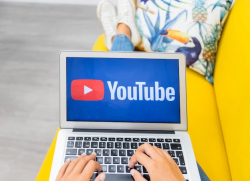 Ways To Improve Video Ranking in YouTube
Ways To Improve Video Ranking in YouTube
 Strength and improvement – Drive More Leads With Our Aviation SEO Services
Strength and improvement – Drive More Leads With Our Aviation SEO Services
 SEO Services For Air Ticketing Websites That You Ought To Consider
SEO Services For Air Ticketing Websites That You Ought To Consider
 Want SEO Services for Pharmaceutical Industry?
Want SEO Services for Pharmaceutical Industry?
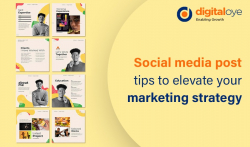 Social Media Post Tips To Elevate Your Marketing Strategy
Social Media Post Tips To Elevate Your Marketing Strategy
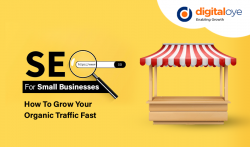 SEO For Small Businesses – How To Grow Your Organic Traffic Fast
SEO For Small Businesses – How To Grow Your Organic Traffic Fast
 SEO For Pharmacy Industry: Complete Guide To Get The Rank
SEO For Pharmacy Industry: Complete Guide To Get The Rank
 10 Essential Priorities For Your Retail SEO Strategy
10 Essential Priorities For Your Retail SEO Strategy
Among the top digital and performance marketing agencies in Delhi NCR, we have been providing marketing solutions to companies from across the globe. To make real difference to your business, get in touch with us today! Call us at Tel: +91-721 7894 696 or email at sales@digitaloye.com to talk to our experts.